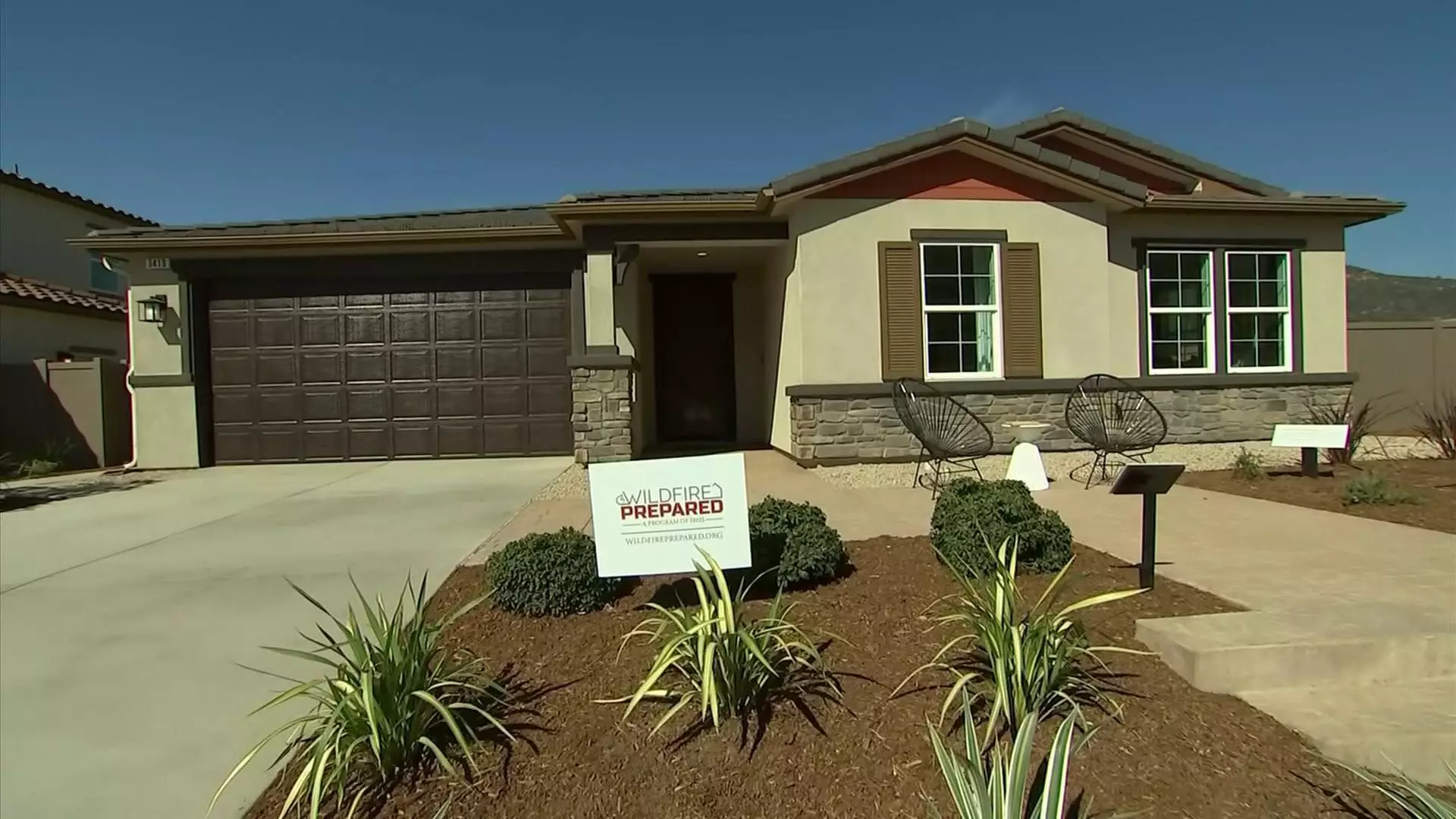The past few years have mercilessly illustrated the catastrophic impact of wildfires in California, particularly in regions like Los Angeles and surrounding areas. These natural disasters have devoured vast landscapes, obliterated numerous homes, and displaced countless families. Against this backdrop of destruction, the introduction of KB Home’s new wildfire-resilient community in Escondido could represent a transformative shift in the housing market. This project showcases not just a response to devastation, but also an innovative leap towards sustainable housing in the era of climate change.
Constructing homes that are resilient to wildfire threats is no longer merely a good idea; it is a necessity. Climate change has accelerated the frequency and intensity of drought conditions statewide, creating a perfect storm for wildfire ignition and spread. Furthermore, the Insurance Institute for Business & Home Safety (IBHS) has made notable strides in setting standards that specifically target the leading causes of ignition: flying embers, flames, and radiant heat. As such, KB Home’s commitment to developing a community that adheres to these stringent guidelines is commendable, especially when considering the broader implications for California’s future housing landscape.
The Anatomy of Resiliency: What Sets These Homes Apart?
At its core, the Escondido development is more than just a collection of houses; it’s a testament to what innovative, future-facing design can achieve. KB Home’s model accommodates essential features such as covered gutters, enclosed eaves, and non-combustible materials—these elements make each residence better equipped to withstand the fury of a wildfire. The homes incorporate tempered-glass windows and strategically designed defensible spaces, ensuring that formation of a protective buffer against flames and heat is a priority.
Additionally, attention to architectural layout cannot be overstated. Spacing the homes a minimum of 10 feet apart serves as a crucial barrier against fire spread, allowing for a more methodical approach to how communities might react under dire circumstances. Steve Ruffner, regional general manager of KB Home’s coastal division, encapsulated this ethos perfectly by dubbing the project a “research and development project.” In an era where housing demand is constantly shifting, this initiative positions KB Home as a trailblazer in applying advanced protective measures to mass-market homes.
Financial Feasibility and Market Realities
Despite the innovative nature of these homes, questions regarding affordability loom large. Price points are expected to range from $1 million to the low millions, inherently positioning these homes as secondary market options for tech-savvy, eco-conscious buyers. While it’s essential to create a safe environment, the conversation must expand to include accessibility. Ruffner emphasized the need to “get the cost to a reasonable place” to attract first-time buyers—a noble goal, but one fraught with challenges given the rising costs of construction and materials.
As insurance companies pull out of California and coverage becomes increasingly hard to obtain, these fire-resilient homes may offer potential buyers a safer bet—if they can afford them. The contrast is stark: home insurance premiums are skyrocketing, leaving many homeowners grappling with uncertainties. By creating a fire-resilient model, KB Home not only addresses housing issues but also presents a solution to potential financial distress stemming from insurance woes.
A Call for Collective Responsibility
While KB Home’s initiative marks an important step, achieving true wildfire resilience requires a collective effort. Future homeowners, local governments, and builders must unite in establishing and maintaining fire-resistant landscapes. Effective community engagement involves promoting appropriate landscaping and design practices, ensuring that neighborhoods function harmoniously in the face of wildfire threats. Roy Wright, CEO of IBHS, aptly noted that “nothing is ever fireproof,” and that continuous efforts are needed to minimize destruction pathways.
Furthermore, the Escondido project serves as a benchmark, with KB Home positioned as a litmus test for future developments. As they explore new projects, including multifamily complexes, the response from other builders could either catalyze or stifle further innovation. It’s essential for the construction industry to embrace change, especially given the climate crisis we face today.
Ultimately, this community will soon uncover its true value, revealing whether these fire-resilient structures can withstand the grim realities of California’s fire season. The implications for future housing projects are staggering; will they prioritize safety as a non-negotiable standard? Hope rests not only with KB Home but with a burgeoning demand for innovation in housing that protects families, property, and the environment.

